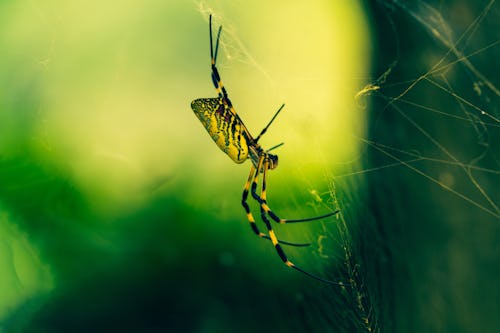
Spring is just around the corner, and you know what that means: The sun is going to be shining, the plants will start to bloom, and **checks notes** the entire East Coast will be overrun by giant spiders.
According to research conducted by the University of Georgia, the large Joro spider is getting ready to set up shop across the Eastern Seaboard. The invasive species could produce millions of offspring that will start to spread their webs across the coast, and there’s basically nothing that we can do about it because they are surprisingly resilient against colder weather.
“People should try to learn to live with them,” Andy Davis, the lead author of the study and a research scientist at UGA’s Odum School of Ecology, told the University of Georgia’s news site. “If they’re literally in your way, I can see taking a web down and moving them to the side, but they’re just going to be back next year.”
So, East Coasters, let’s meet your new neighbors!
The Joro spider comes from Japan, but has been living in the U.S. since 2013. While the little arachnids have been concentrated in Georgia for nearly a decade, they’re starting to fan out. They love to travel, and do so by using their webs as parachutes, which is something that you probably had a nightmare about once.
You’ll be able to identify Joro spiders easily, and not just because you can always spot a tourist: They have bright yellow and blueish-black bodies with red markings and golden webs. They measure in at about 3 inches long — about the size of a human palm — and they love to hang out in trees.
Researchers recommend you welcome these guests. They’re harmless to humans and pets, rarely bite, and are generally more of a nuisance than a danger. They do, however, serve as a food source for birds. Scientists have pleaded with residents not to squish the spiders, as they do little harm and likely aren’t going away any time soon — but if you spot one, just look around to make sure no one in a white lab coat is watching, and then do what you gotta do.







